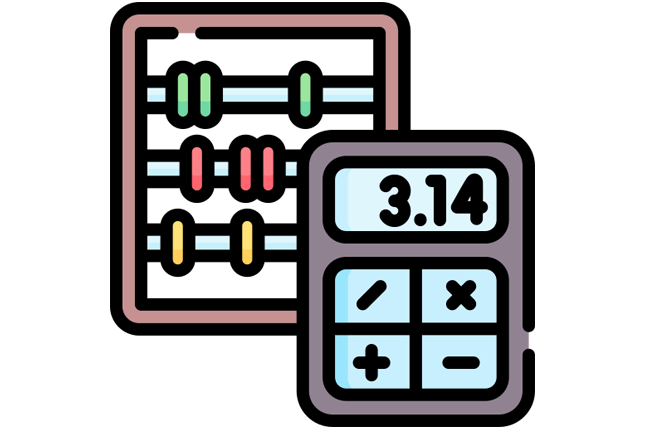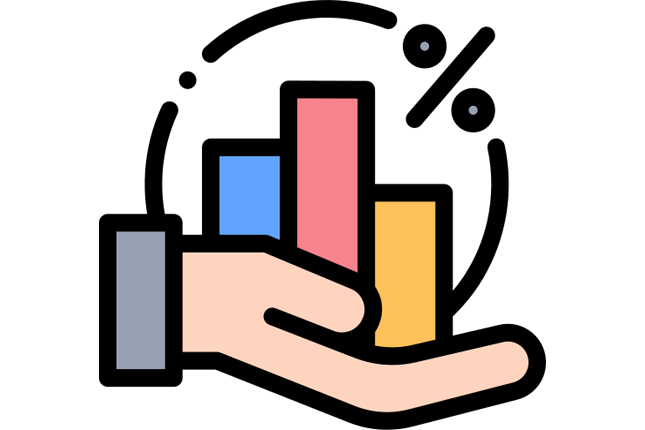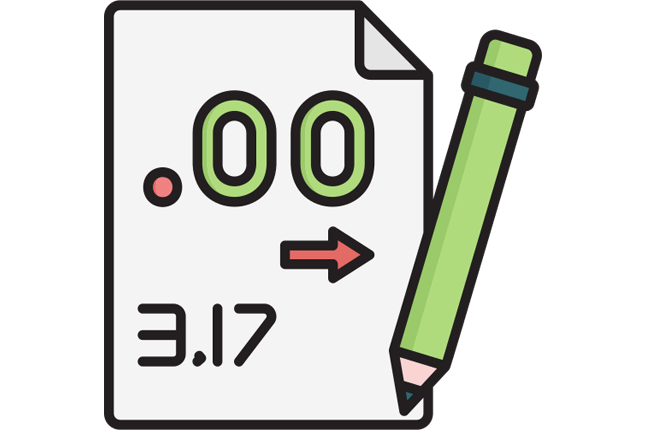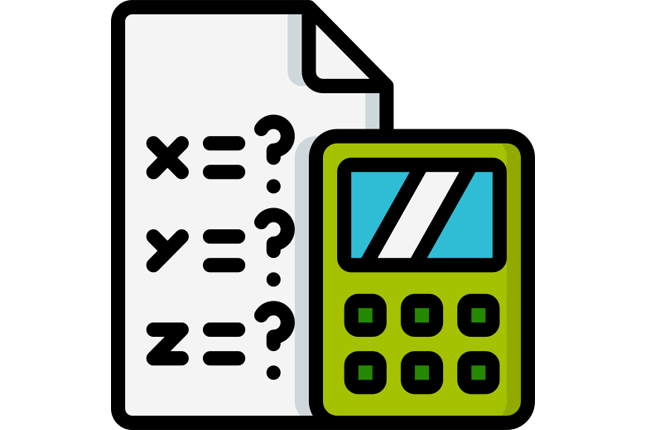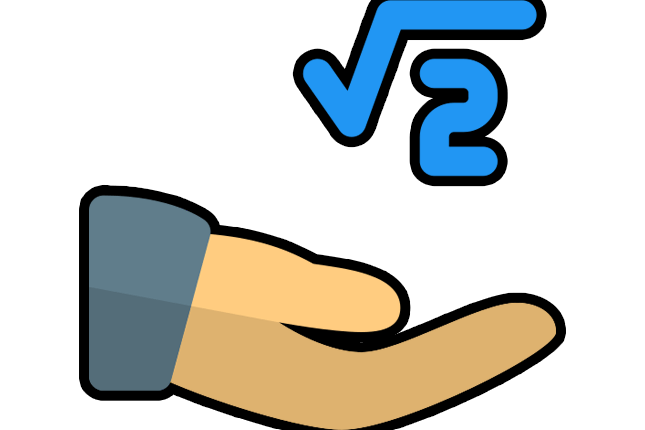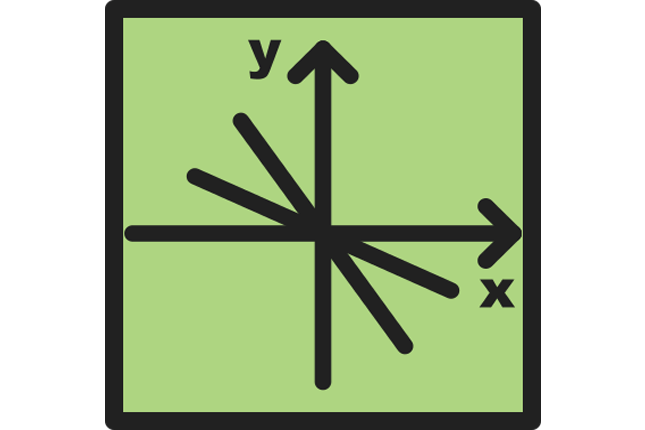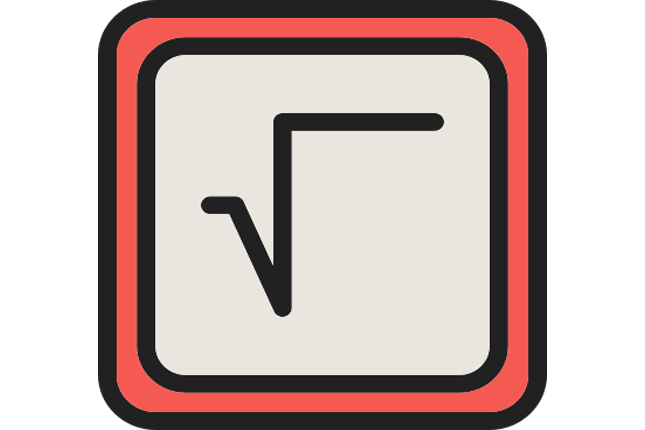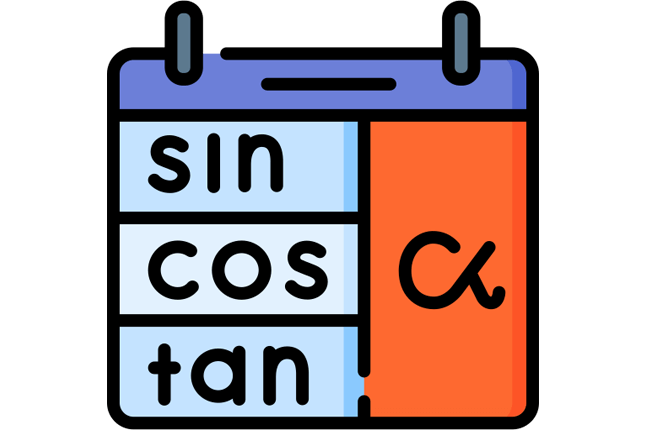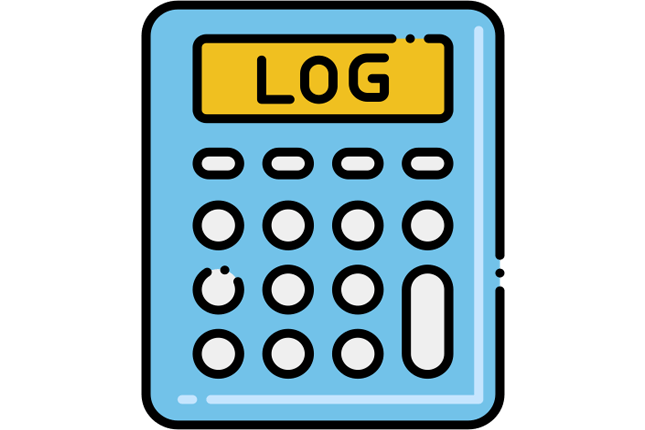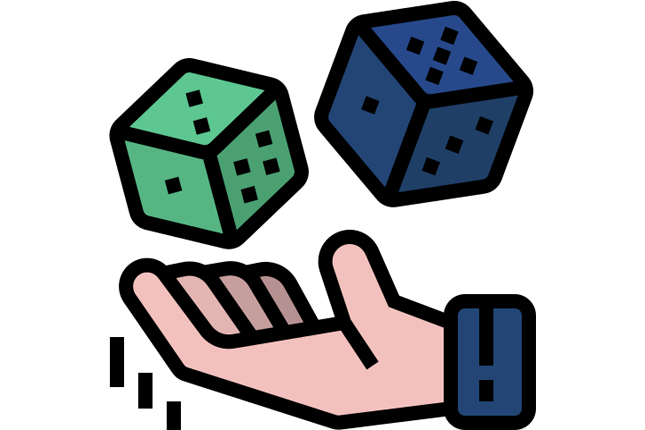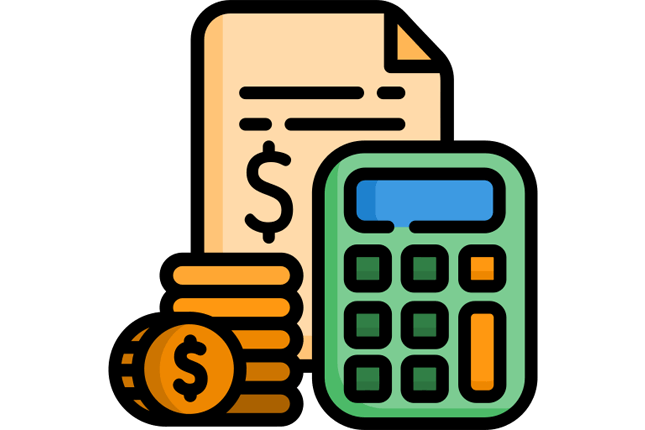Key Math Topics
Everyday Math – Essential Principles and Their Applications
Mathematics often appears as a subject that exists in a world of abstract symbols and formulas, yet its influence is evident each time people cook a meal, analyze statistics on daily news sites, or adjust recipes for unexpected guests. The concepts explored here—ranging from algebra to basic statistics—form the groundwork of countless tasks, from household planning to scientific research and technological advances. Recognizing these essential principles can strengthen logical thinking, improve everyday problem-solving, and illuminate ways to make informed decisions. The sections below delve into key mathematical topics, explain their defining features, and illustrate how they manifest in practical environments.

Algebra
Algebra provides a language to represent numbers using letters or symbols, enabling individuals to rewrite various phenomena in a structured format. Instead of merely performing operations on known values, algebraic reasoning generalizes arithmetic methods and allows users to tackle an array of equations. This approach involves identifying variables—unknown quantities that take on different numeric values—and systematically manipulating them to solve problems.
Applications of algebra are frequently found in real-life decision-making scenarios that require organizing knowns and unknowns. A routine example might involve calculating how much a group of friends needs to save each week to afford a particular activity by a certain deadline. By translating the problem into an algebraic equation and isolating the unknown variable, the required weekly sum becomes clear. Shoppers might rely on algebra to see how changing one category of monthly expenses impacts the overall budget.
The importance of algebra also resonates in specialized fields. Software developers incorporate it into algorithms that power websites, devices, and data-driven processes. With properly formulated expressions, these algorithms efficiently process large volumes of information, such as matching search queries to relevant digital content. Engineers employ algebraic equations to design and test structures, ensuring that materials meet specified safety factors when exposed to different stressors. This includes verifying that the thickness of a beam in a building can support varied types of loads, or that an airplane wing can handle air pressure at different altitudes.
Algebra facilitates the creation of mathematical models—logical constructs that approximate how the real world behaves. If someone wants to forecast the impact of multiple variables, such as speed and weight in designing a new piece of machinery, algebraic expressions help organize assumptions clearly. Once the relationships between quantities are stated, adjustments can be made to see how small changes in one factor ripple through the entire system. That skill, grounded in algebra, reveals an underlying structure that might otherwise remain hidden in raw data.
Percentages
Many everyday activities revolve around evaluating percentages. These numbers, which represent parts per hundred, allow quick and clear comparisons across different scales. By converting ratios or fractions into a common base, it becomes more straightforward to assess price reductions, measure changes in performance, or interpret statistical data.
Shoppers encounter percentage-based calculations when deciding whether to purchase items on sale. Suppose an electronic gadget is reduced by 25%, and someone wants to see if the discounted price truly matches their budget. Converting that discount to a dollar figure ensures clarity on what the final total will be. Restaurants often rely on percentages for tips, where patrons consider a certain fraction of the bill to reward service. Here, a 15% or 20% tip can be quickly calculated to check if the extra amount is feasible.
Data interpretation further relies on percentages to highlight trends. A public health official explaining changes in infection rates, for example, might note that the daily case count has dropped by 10%. This figure provides a more intuitive snapshot than raw numbers alone. It helps audiences understand whether conditions are improving without analyzing large spreadsheets. When news outlets share stories about employment figures, they typically convert them into a percentage to represent how many people within a working population are job-hunting.
In more specialized fields, scientists often handle percentages to describe compositions or probabilities. A chemist working on a new compound might use a percentage to indicate the presence of specific elements within a sample. If a medical researcher reveals that a new treatment shows a 30% improvement rate compared to standard care, it translates medical findings into an accessible metric. By tying outcomes to a percentage, the significance of an observation becomes clearer to policymakers, participants, or health departments keen to refine solutions.
Fractions and Decimals
Fractions and decimals represent fundamental building blocks for expressing partial quantities. Fractions typically describe these parts as a ratio of two integers (such as 3/4, 1/2, or 7/8), whereas decimals translate those values into a base-ten system (0.75, 0.5, or 0.875). These parallel methods both enable precise representations of real-world measures.
Cooks constantly rotate between fractions and decimals. A recipe might demand 3/4 cup of flour, but kitchen scales might read in decimals. Chefs or home cooks switch seamlessly between these two notations to maintain accurate ingredient ratios. Similarly, household projects—like painting walls—can involve reading dimensions in fractions of an inch and then converting them to decimal measurements if the tools or resources call for it. Consistency in these conversions helps prevent uneven painting surfaces or misjudged cuts.
Retail transactions also highlight the role of fractions and decimals. Currency systems around the world rely on smaller denominations, such as cents in the United States or pence in the United Kingdom, which are effectively fractions of the primary unit. Individuals who keep a close eye on itemized receipts frequently notice decimal amounts or fractional tax additions.
Education in fractions and decimals fosters a deeper awareness of continuous values and bridging them with whole units. In advanced science classes, for instance, measuring concentrations for experiments might rely on decimals to note precise quantities like 0.03 grams of a compound. Converting that figure to a fraction helps keep calculations straightforward in certain formulas, especially if existing references or tables are published in one format over the other.
Ratios and Proportions
Ratios portray how one quantity stands relative to another, while proportions indicate that two ratios hold the same relationship. Together, these concepts provide a means of scaling items up or down in consistent ways. A typical example is found in cooking, where a recipe for four might need to serve eight, or, conversely, feed only two. Multiplying or dividing each measured ingredient by the same factor can keep taste and texture uniform.
These methods are equally vital in global settings such as currency exchange. The ratio between two currencies can shift based on economic events, and travelers check up-to-date exchange rates to estimate how much of one currency they can get with another. This knowledge informs purchases or daily budgets abroad.
Engineering tasks often rely on ratio calculations as well. A scale model of a building might be constructed at 1:50, meaning every 1 unit in the model corresponds to 50 units in the actual structure. Maintaining that ratio ensures the miniature representation provides an accurate reference for design or safety analysis. Similarly, map-making depends on the principle of proportions to reflect real distances on paper. A specified scale, such as 1 inch representing 10 miles, guides travelers or planners who interpret that map for routing or resource allocation.
In scientific experiments, correct ratios determine whether chemical reactions will proceed as intended. Mixing ingredients at precise ratios ensures balanced results, whether that reaction generates a new material for medical use or tests a theory about properties of matter. By applying proportions, experimenters confirm that each test aligns with established guidelines and remains consistent across different trials, leading to trustworthy results.
Exponents and Powers
Exponents refer to the repeated multiplication of a number by itself, indicated by a superscript. This concept offers a powerful method for expressing large numbers and modeling growth or decay rates. A base number raised to an exponent captures phenomena like doubling, tripling, or even more complex expansions and contractions.
Professionals in information technology regularly encounter exponents when discussing data storage. Digital devices measure storage in bytes, but these units scale upward using powers of two, such as kilobytes (2^10 bytes), megabytes (2^20 bytes), or gigabytes (2^30 bytes). Understanding that storage expands exponentially clarifies how quickly space can be consumed by applications, media libraries, or large databases.
Scientific fields treat exponents as central to describing processes that change rapidly. For instance, population growth in biology may follow patterns that approximate exponential increases if resources are abundant. Epidemiological models also track how an infection spreads in a group by applying exponential functions to project changes over time. These calculations help authorities assess whether certain measures will contain an outbreak before it overloads healthcare systems.
Daily life includes subtle references to exponents as well. A phone’s battery capacity might be measured in milliampere-hours (mAh), relying on units that expand or contract in steps of a thousand (10^3). Individuals working with geometric dimensions might note how area calculations involve squares of length (like square meters) and volume calculations deal with cubes. Even certain loan payback schedules reflect repeated multiplication of accrued charges, although it is wise to evaluate these details carefully to avoid unexpected costs.
Roots and Radicals
Roots and radicals flip the concept of exponents, extracting the value that was repeatedly multiplied to achieve a given product. Square roots stand out as the most familiar example, indicating the number that, when multiplied by itself, produces the original figure. Cube roots likewise reveal the factor multiplied three times.
Physical tasks frequently use square or cube roots to ensure accurate measures. Someone installing floor tiles may need to calculate square footage first, then determine how many tiles fit within those dimensions. If there is a question of how each measurement fits within a geometric boundary, applying square roots at times can clarify the scale. Landscaping projects follow a similar rationale, especially when distributing soil or mulch that might arrive in cubic volumes.
Science harnesses the notion of roots to investigate properties that reflect repeated multiplication in reverse. Acousticians, for instance, might analyze frequency relationships in waves, and certain calculations depend on extracting roots to understand harmonics. In electronics, an engineer analyzing signals might rely on root-mean-square values to characterize how alternating currents behave over time.
Classroom practice in roots and radicals sets the stage for more advanced topics, including factoring polynomials or dissecting complex equations that arise in physics. By mastering radical operations, learners become adept at dissecting how one variable influences another, whether that pertains to angles in trigonometry or bounding constraints in optimization tasks.
Basic Statistics
Statistics explores how to gather, interpret, and represent data. Through this study, patterns become visible where raw numbers might have looked haphazard. Descriptive statistics, for instance, offer measures of central tendency such as the mean (average), median (middle value), or mode (most common figure). Dispersion metrics, like standard deviation, measure how widely values scatter around a central point.
In healthcare, statistics guide choices on public programs or clinical treatments. Researchers who plan large medical trials gather data on hundreds or thousands of participants, then use statistical tools to determine whether a new approach significantly improves outcomes compared to existing methods. Health agencies rely on statistical projections to allocate resources, particularly if a seasonal illness is projected to peak at certain times of the year.
Sports teams employ statistical analysis to gauge player performance. Terms like batting average or field-goal percentage highlight a notion of success out of total attempts. By analyzing these numbers across multiple games, coaches decide which player might excel against a specific opponent. This data-based strategy significantly influences lineups, training regimens, and scouting decisions.
Personal decisions also benefit from a basic grasp of statistics. When reading a news report, an individual might differentiate correlation from causation to avoid drawing hasty conclusions. Evaluating how likely a rare event might be prompts more balanced perspectives about everyday risks. By comparing data across different categories, a family can organize budgets or decide how to allocate time more effectively.
Data visualization is part of this statistical understanding, as charts or infographics break down large data sets into accessible formats. Whether seeing how a bar graph outlines changes in monthly expenses or interpreting a pie chart about dietary preferences, the capacity to interpret or produce visuals fosters clearer communication.
Mathematics as a Continuous Resource
These essential math topics—algebra, percentages, fractions and decimals, ratios and proportions, exponents and powers, roots and radicals, and basic statistics—form an interconnected framework that provides countless advantages in ordinary tasks and specialized pursuits alike. Whether a person adjusts a recipe to feed unexpected guests, calculates sale discounts on an outing, or parses results of a scientific study, the underlying processes hinge on these foundational ideas.
Proficiency in these fields encourages a habit of reasoning that carries into professional roles. Engineers rely on algebraic formulas for design calculations, medical researchers employ statistics to ensure valid scientific conclusions, and digital specialists integrate exponent concepts into data management procedures. Even individuals focused on household management use arithmetic to track monthly finances or plan for new necessities.
Over time, personal experiences often reinforce just how relevant these principles are. When children begin to make sense of fractions in the kitchen, they discover that math helps create consistent dishes. When a young adult starts analyzing wages or weekly schedules, algebraic problem-solving clarifies how to balance obligations. When an enthusiast compares performance metrics in sports or personal fitness, statistical reasoning breaks down achievements in a relatable format.
By recognizing how each topic intertwines with daily events, learners appreciate math not only as a school requirement but also as a skill that enhances clarity and confidence. Rather than a distant subject confined to textbooks, mathematics remains a dynamic partner in both routine decisions and forward-thinking tasks. Embracing these essential principles can equip any individual, regardless of professional or academic background, with the tools to interpret scenarios and make choices that stand on solid, quantifiable ground.


